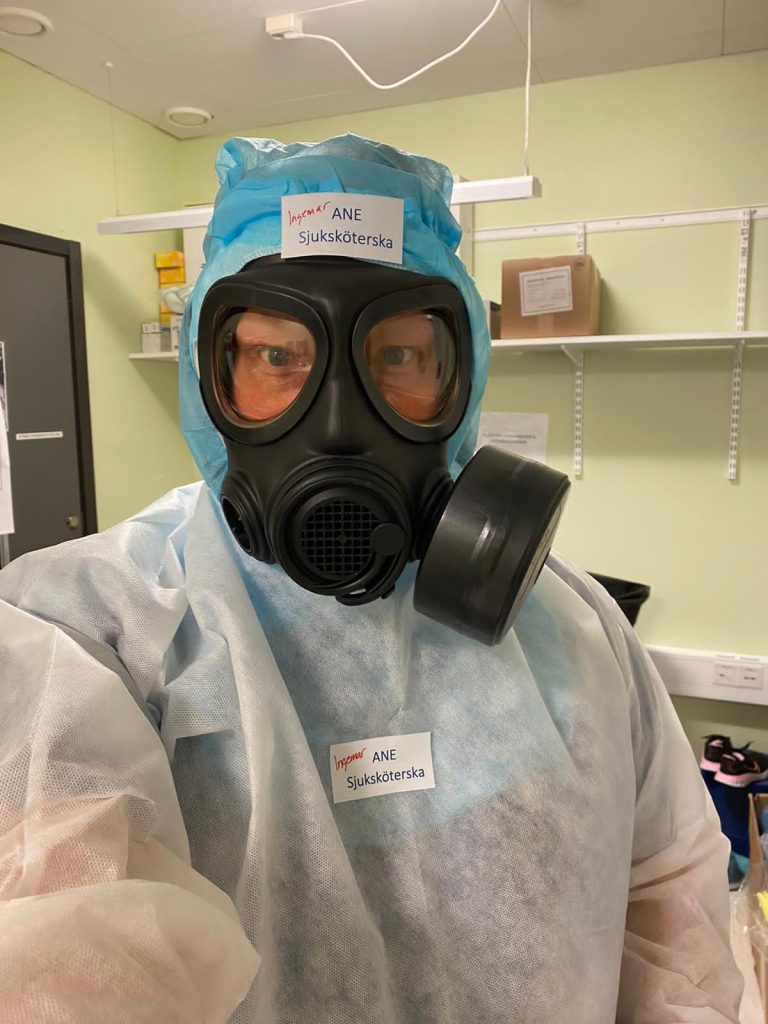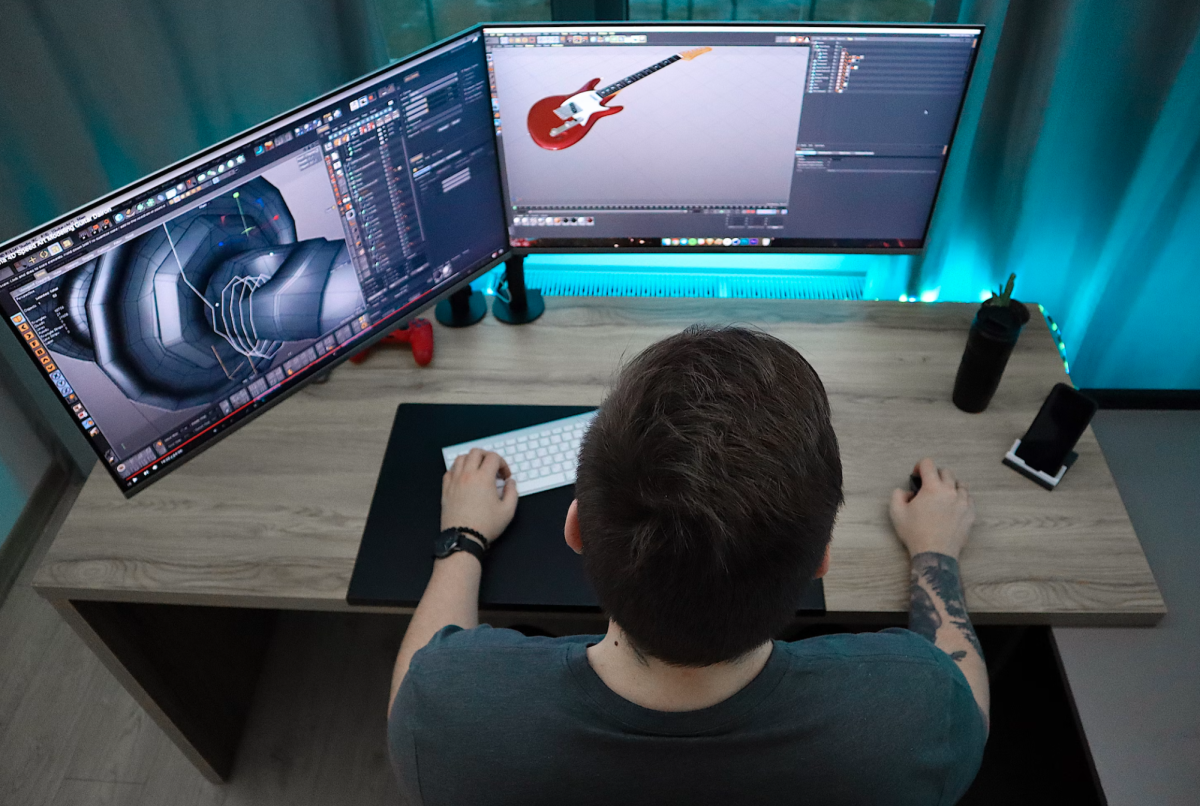My uncle, nurse Ingemar Hällström, walks around Stockholm, Sweden, maskless. He passes strangers who greet him with a smile, one that’s not hidden behind a shield of cotton. Before he enters the ICU, he puts on layers upon layers of protective equipment, then goes through an airlock, ready to check on his infected patients.
Sweden’s COVID-19 Strategy
Sweden’s approach to COVID-19 was radically different. It relied on people taking personal responsibility to contain the virus instead of government-mandated strict lockdowns.
Folkhälsomyndigheten, Sweden’s Public Health Agency, asked citizens to use common sense and follow its personal responsibility statement: “You are obliged to take precautionary measures to protect yourself and others from the spread of COVID-19. You should think about how you can avoid getting infected and how you can avoid infecting others. You should show consideration for your fellow human beings.”
Sweden mostly relied on social distancing to prevent the spread of the virus and only mandated masks in places where it’s difficult to social distance, like public transport. “We have never had masks that much out in society,” Hällström said.
Hällström thought that Sweden’s strategy was effective. “We had [fewer] laws that prohibited movement than other countries so the positive side of that is by having [fewer] laws, people are more willing to obey by them,” he said.
He also thought that his country’s strategy was positive in that it not only took into account COVID-19 but also other elements of society like having schools open to benefit student’s social and mental health. However, Hällström believes that Sweden failed in protecting the elderly from the virus.
Sweden has a population of 10.2 million and had 1.06 million cases and 14,351 deaths as of May 21. “Only its sparse population and well-funded healthcare care system have stopped deaths from rocketing to levels of Italy or Britain,” according to DW News.
Inside an ICU
Hällström is a nurse anesthetist in an outpatient facility at Karolinska University Hospital, in Stockholm, Sweden. Many staff members from the anesthesia and surgical departments were employed to help out in ICUs.

“There is a big shortage of ICU nurses and there is no time to educate other nurses or other personnel to do the jobs that they do,” Hällström said. “Nurse anesthetists are used to [handle] difficult airways and breathing and [take] care of really sick people.”
Although hospital staff from other departments have been trained by intensive care specialists, the learning curve is steep. “We have patients lying in the ICU for more than 50 days and a lot of processes happen in their body and that’s a challenge to pick up,” Hällström said.
Hällström has had to make significant changes to his schedule when working in the ICU. Before the pandemic, he worked eight hours a day, but now he works 12 and a half hour shifts including a lunch break and two other breaks.

Hällström starts his shifts by putting on the same protective equipment that is used in infectious disease wards. “[We are] engaged in the handling of infectious airways which is the most infectious part of treating a patient,” he said. He wears a gown and either a gas mask or a face shield with more masks underneath.

“I’ve never been afraid to contract the illness,” Hällström said. “It’s more likely that I’d be infected somewhere else in society than when I’m working.” According to a study published in the medical journal, Thorax, “The risk of COVID-19 infection among hospital staff at the height of the coronavirus pandemic was lowest among intensive care clinicians.”
After getting dressed, he goes through an airlock to get into his ward. “It’s an open area where people lie in cubicles,” Hällström said. “There are [also] two isolation rooms that we use if people have other contagious diseases.”
Upon entering the ward, the nurses assemble and get their assignments. His ward has 18 patients and he oversees two to three of those patients.
“I have to read the charts of the patients because there might be new patients for me that I’ve never met,” Hällström said. “There might [also] be patients that I’ve taken care of previously so I have to read the charts to see what the plan is and how far we’ve come in the treatment.”
After reading their charts, he examines the patients to see if there’s any change and checks on all of the drugs that they’re receiving. There are typically five or six drugs going at the same time through pumps.
Later in the morning, the nurses have rounds with intensive care specialists and infectious disease specialists, where they talk through the strategy of how they’re going to treat their patients for the day.
The Ins and Outs of Intensive Care
Intensive care is about supporting the body’s own functions and organs while the body heals from the disease. When it comes to COVID-19 patients, the staff’s efforts are focused on patients’ breathing and making sure that they have sufficient oxygen. This can be done in various ways, from giving high-flow oxygen with a special device to sleeping with a respirator for long periods of time.
“In the beginning, nobody knew how to treat this disease, so we treated it like most other diseases but COVID is a bit different,” Hällström said. “Most patients in a normal ICU are sick in several systems in their body but COVID patients mostly just have a single organ failure, the lungs, which are the most affected.”
One thing the ICU team learned over the initial months of the pandemic is that it’s better to wait to put patients asleep on a respirator, as patients can tolerate getting oxygen while awake for much longer than when they are asleep. Keeping patients awake prevents them from losing as much muscle mass because they use their own muscles and it prevents them from using as many sleeping pills and sedating drugs that can affect their awareness and heighten their fear and confusion.
“We saw several other things that were important like having the right temperature of the air, the right moisture and we also treat patients more with steroids now than we used to and start the steroid treatment earlier,” Hällström said. “We’ve also seen that it’s much more effective if you lie on your stomach when you breathe.”
Hällström has also learned about the unpredictable nature of COVID-19. “It’s a strange disease because some people only get a light flu and other people get really really sick and die and we don’t know which patients who are gonna get really sick and which people are only gonna have a light infection,” Hällström said.
He has come to terms with that when working with ICU patients, that some of them are going to pass away no matter what his team does. “We do our best, and we really thrive on the people that are getting better and are getting home,” Hällström said.
Hällström believes that there are many lessons others could learn from his experience. “Even if we’re a bunch of people who haven’t done anything like this before we can get through it with a lot of success if we work together and use each other’s strengths,” Hällström said.
By Zoe Hällström


































































